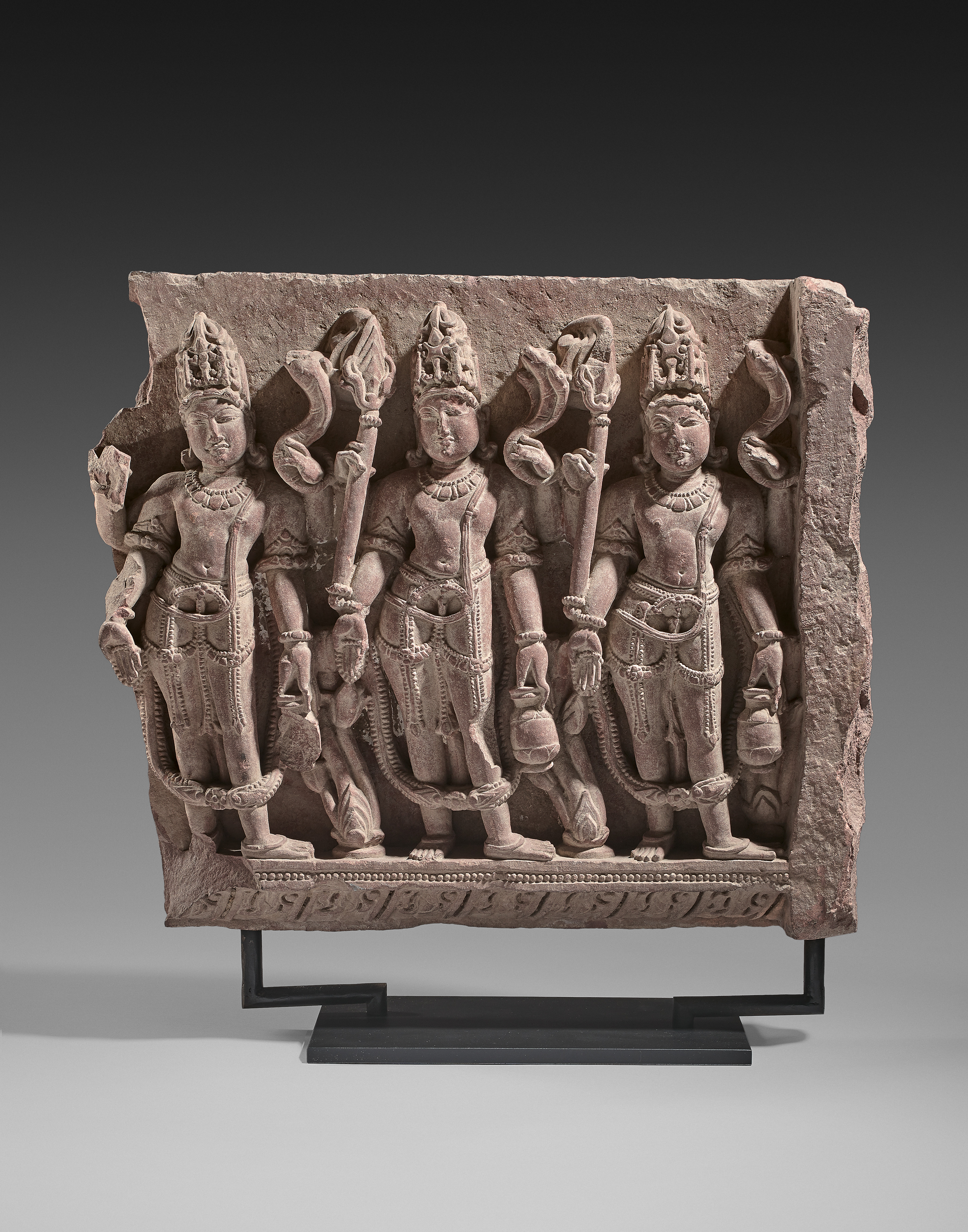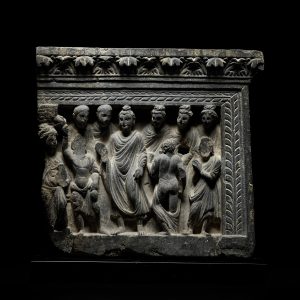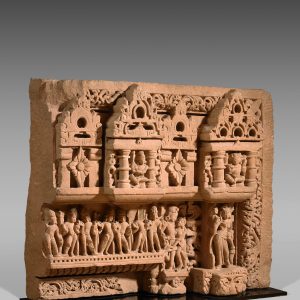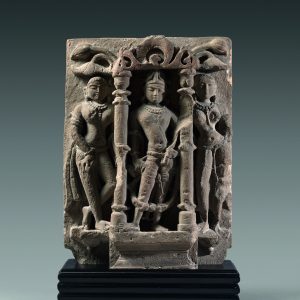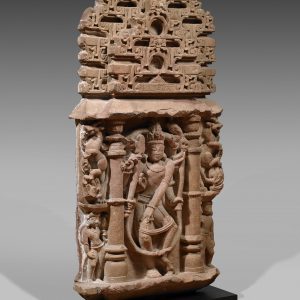Śaiva adorants
Sandstone
Madhya or Uttar Pradesh, Central India
C. 8th century, post-Gupta period
H. 43 cm
Description
Magnificent sandstone relief of central India, characteristic of the post-Gupta period around the 8th century. This stele is an enigma in terms of iconography and an example of harmony in its composition, style and attention to details. Three characters dressed like princes are standing, in a slightly contrapuntal and frontal attitude.
Three of the attributes they hold in their four hands allow us to associate them with the traditional iconography of Śiva and to lend them, hypothetically, the role of Shaivite or śaiva worshipers. For each of them, their upper right hand brandishes the trident (triśūla) and the lower one holds a rosary (akṣamālā). A multi-headed snake emerges from the upper left hand. The remaining hand is holding a situla. The torsos are adorned with the Brahman cord (yajñopavīta) and we particularly appreciate the mix of very genuine jewels – such as necklaces with silver plates – with fancy ornaments, such as the magnificent tiaras with obvious complexity.
The piece is characterized by a great mastery of the volumes and a softness of the forms with these elegant poses, the left foot emphasizing systematically the horizontal friezes of pearls and graphic motifs of the lower part. This repetition is also cleverly nuanced and lightened by a desire for individualization that is visible in the faces, the tiaras, the modeling of the torsos and the fluidity of the bodies.
Provenance: Private collection, UK, since the 1990s.
Art Loss Register Certificate, ref. S00143236

